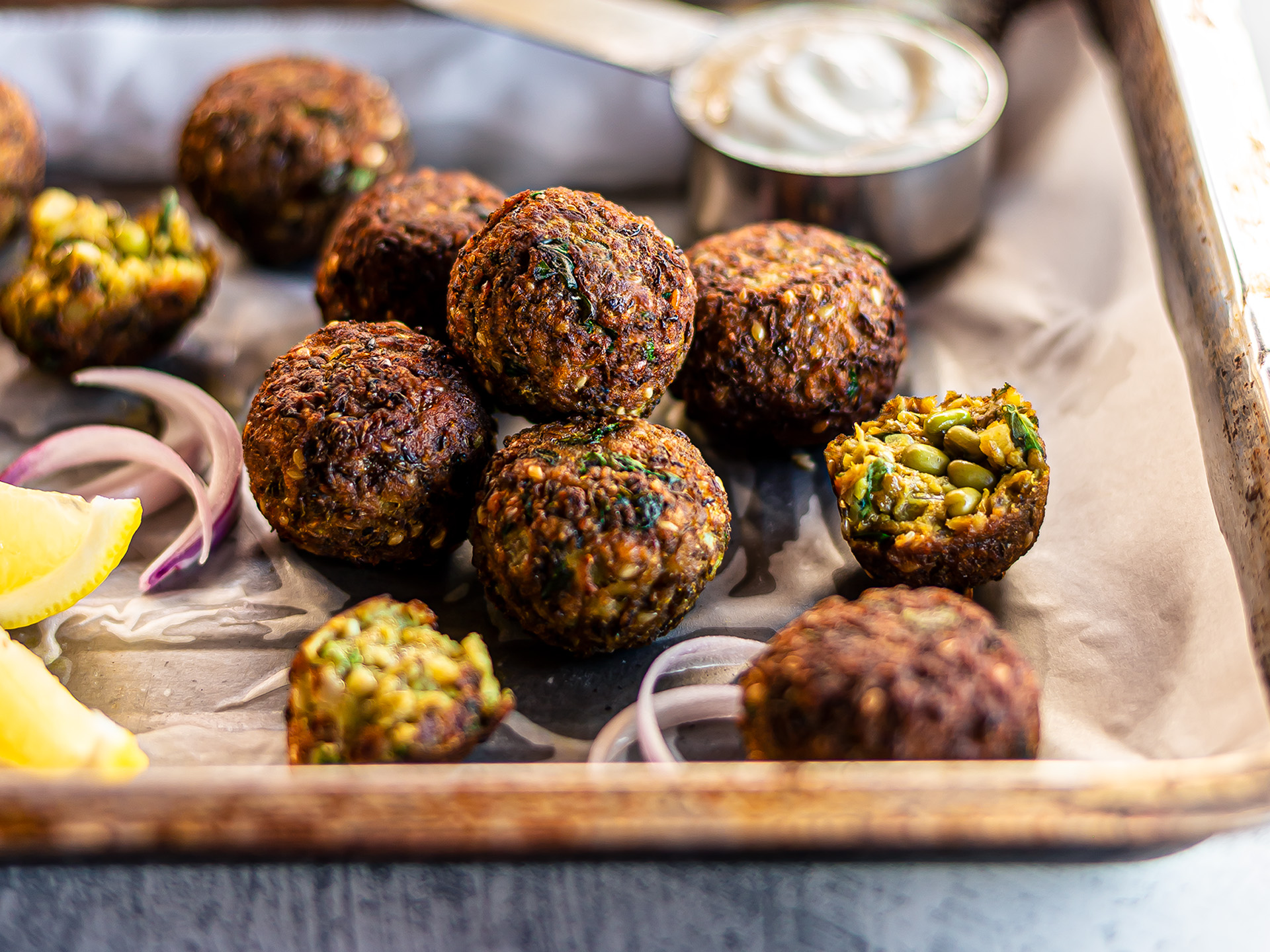Today, we revisit the classic falafel recipe and give it a fun Indian makeover using mung beans instead of chickpeas. It's a flavour-packed alternative, perfect when you fancy something different from the traditional fritters, but equally delicious!
Mung beans are tiny green beans, also known as green gram or munggo. They're widely used in South and Southeast Asia, especially in Indian, Indonesian, Chinese, and Filipino cuisines.
Compared to chickpeas, mung beans are smaller and have a nuttier, sweeter flavour. They also cook faster and have a less crumbly texture.
You might not know it, but folks in India already have their own version of falafels. It's called vada or vadai: small, fried bean patties flavoured with spices and herbs like curry, masala, and cilantro.
Instead, the classic Egyptian falafels are bite-sized balls of chickpea dough made with ground chickpeas, fresh parsley, cumin, and garlic. These little morsels are deep-fried until browned and crispy, and then served with warm pitta bread and tahini sauce.
Our mung bean falafels are a delicious cross between these two recipes: ball-shaped fritters of mung bean paste with fresh coriander and curry powder, plus sesame seeds and garlic. So good!
In classic falafels, you have to soak the chickpeas overnight, blend them into a chunky dough, and shape it into balls before deep-frying them.
In our recipe, instead, we shook things up to make it easy, faster, and healthier!
How? Simply soak the mung beans for 2-3 hours, and simmer them for 20 minutes until soft. Then, mash the beans into a paste with the other ingredients, shape the falafels, and oven-bake them until golden.
Baked instead of fried, these homemade bean falafels are super healthy and low in fats. They're soft inside and crispy outside, lightly spiced and flavourful.
Now, time to gather the ingredients and make these delightful mung bean balls together. The recipe is so simple you'll be munching on these goodies in no time!
And if you'd like to try another delicious recipe with mung beans, check out this vegan mung bean burger, Chinese sweet mung bean soup, and mung bean curry puffs!
Ingredients
| Raw Mung Beans | 280 g |
| Onion | 1 |
| Garlic Cloves | 4 |
| Chopped Parsley or Coriander | 2 tbsp |
| Curry Powder | 1 tbsp |
| Salt | 1/2 tsp |
| Baking Soda | 1/2 tsp |
| Roasted Sesame Seeds | 2 tbsp |
| Flour (plain or wholewheat) | 50 g |
| Vegetable Oil (for brushing) | to taste |
Step 1
Rinse the dried mung beans, add them to a bowl or pot, and cover with water.
Let the beans soak at room temperature for at least 3 hours.
The longer you soak them, the quicker they will cook. So, leave them in water overnight (about 8 hours), if you can.
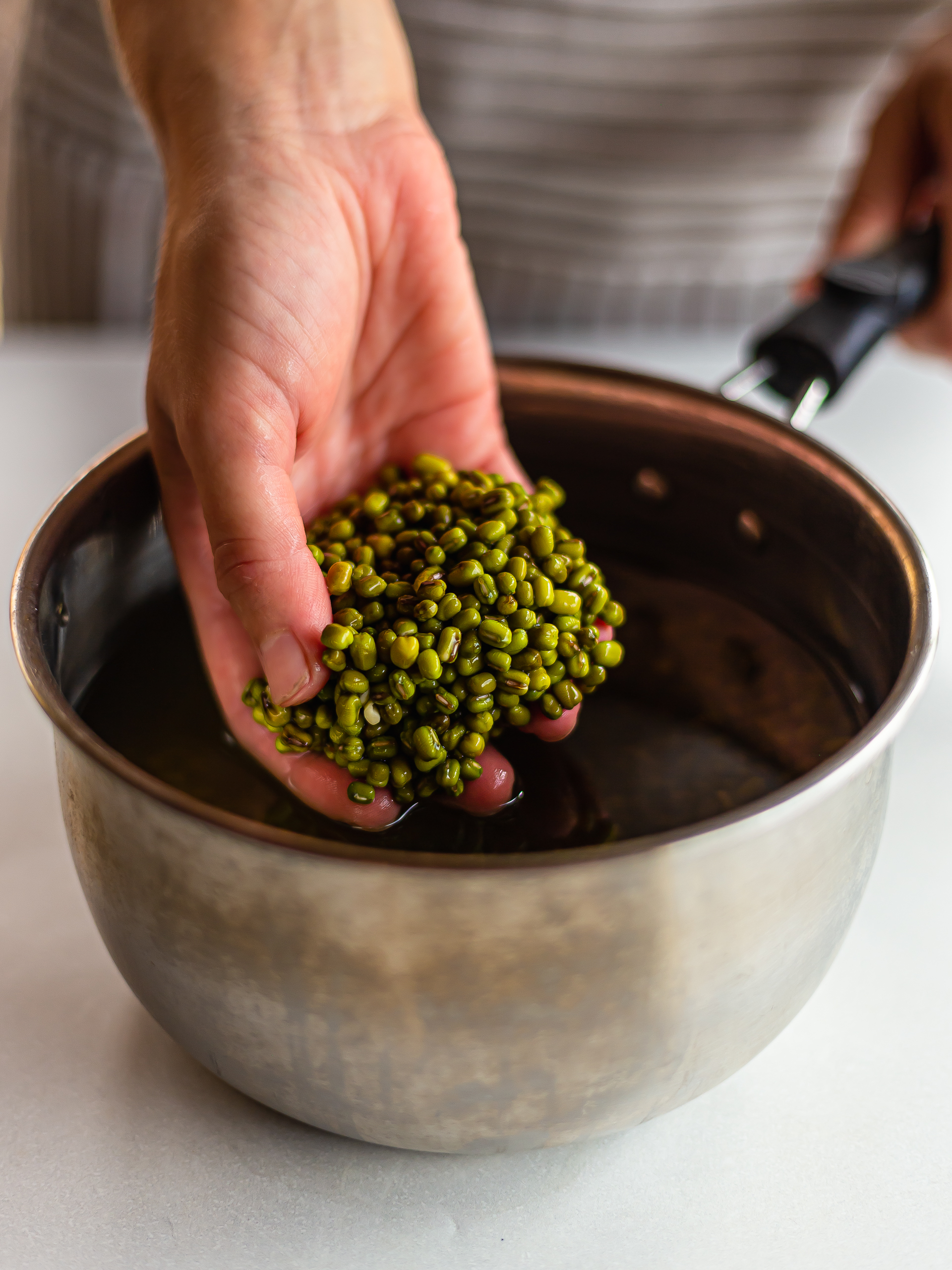
Step 2
To cook the mung beans, drain the soaking water and add the beans to a pot of water, followed by a pinch of salt.
Cover and bring the water to a boil. Simmer the mung beans over low heat for 20-30 minutes.
The cooking time may vary depending on how long you've soaked them for.
The mung beans are ready when they have almost doubled in size, and they're soft enough that you can easily mash them with your fingers.
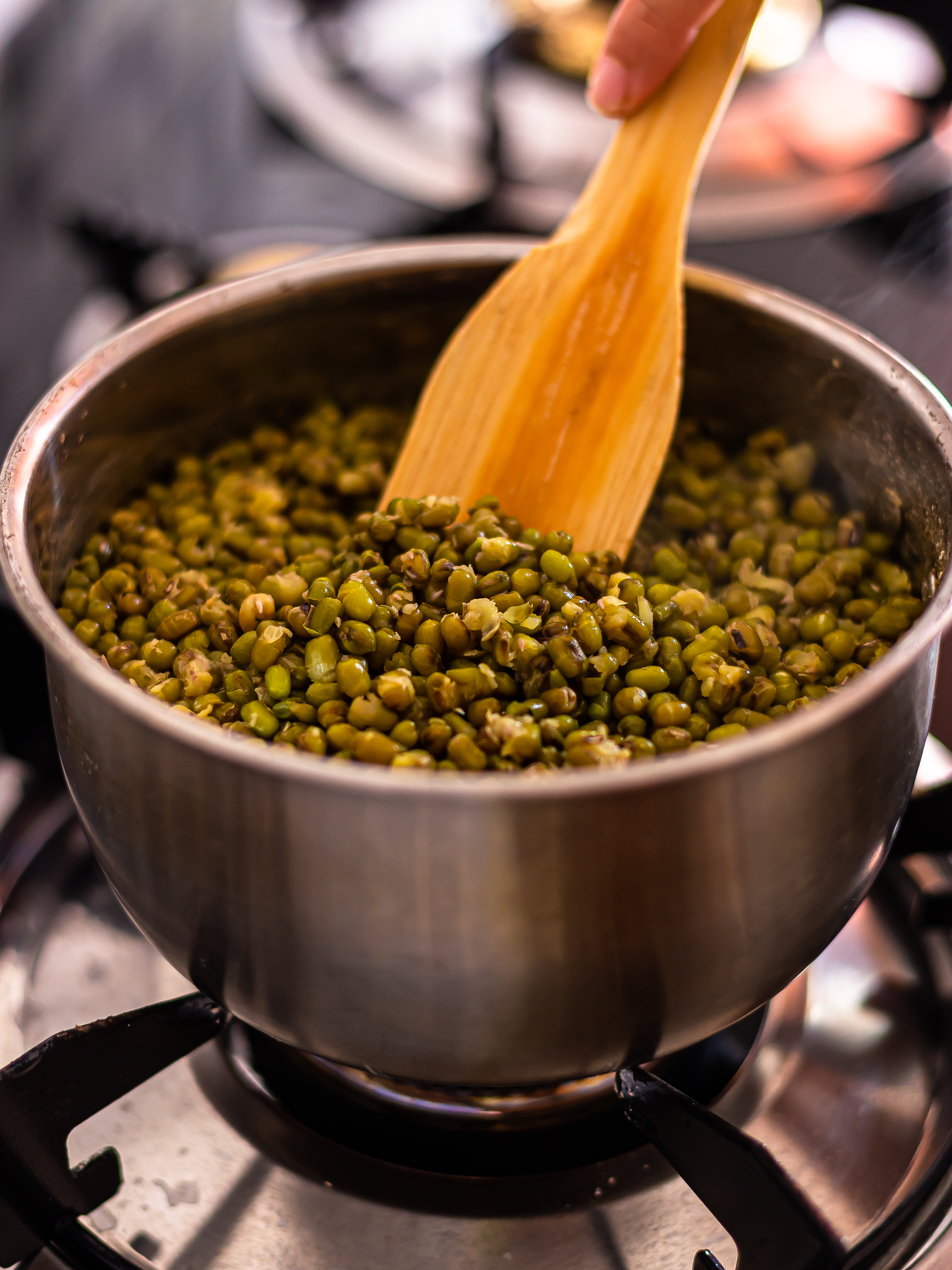
Step 3
Once ready, drain the cooking water, and rinse the mung beans thoroughly under cold water using a fine-mesh colander.
Then, place the colander with the mung beans over a bowl or pot.
Let the beans sit for 20 minutes to cool down and allow excess water to drain into the bowl.
Then, press down on the mung beans to squeeze out any residual water.
This step is really important, so don't skip it.
You must let the beans drain thoroughly and cool, or you'll end up with a soggy and mushy falafel dough.
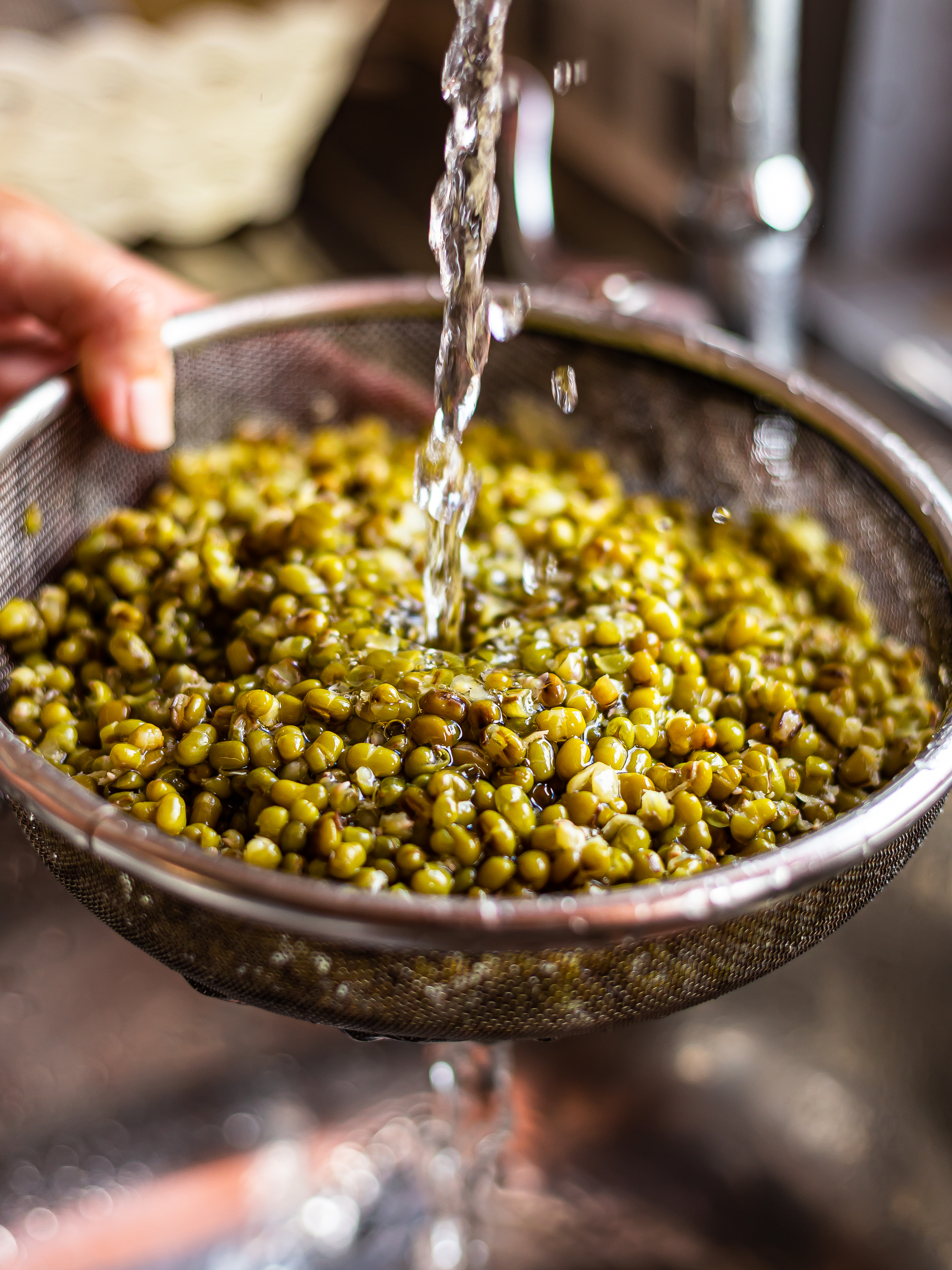
Step 4
Now, transfer the drained mung beans to a mixing bowl.
Tip in finely chopped onion, garlic, herbs, spices, salt, baking soda, flour, and toasted sesame seeds.
You can use fresh parsley and cumin for a more traditional flavour or opt for cilantro and curry powder for an Indian twist.
For a gluten-free option, you can swap flour with half the amount of starch. Or you can add in one mashed potato, as we did in this other falafel recipe with black beans and sweet potatoes.
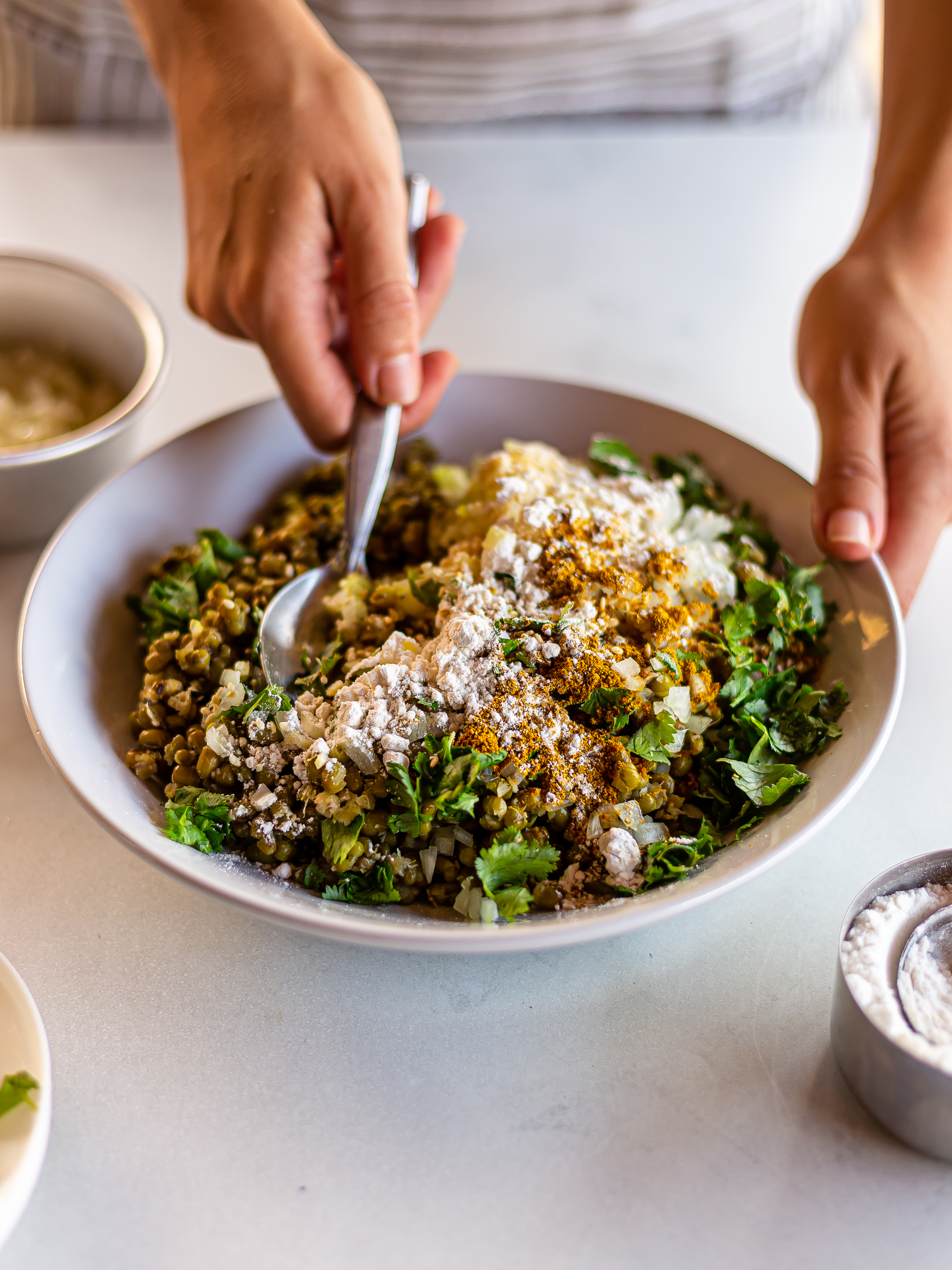
Step 5
Mix the ingredients with a spoon first, and then use your hands or a potato masher to mash the mung beans into the bowl.
Keep mashing and mixing until you have a dough.
The falafel dough should be a bit chunky and slightly dry, but you should be able to compact it into a ball.
Keep in mind the salt will draw out the water from the falafel ingredients as time goes by, making the dough moister, softer, and easier to mould.
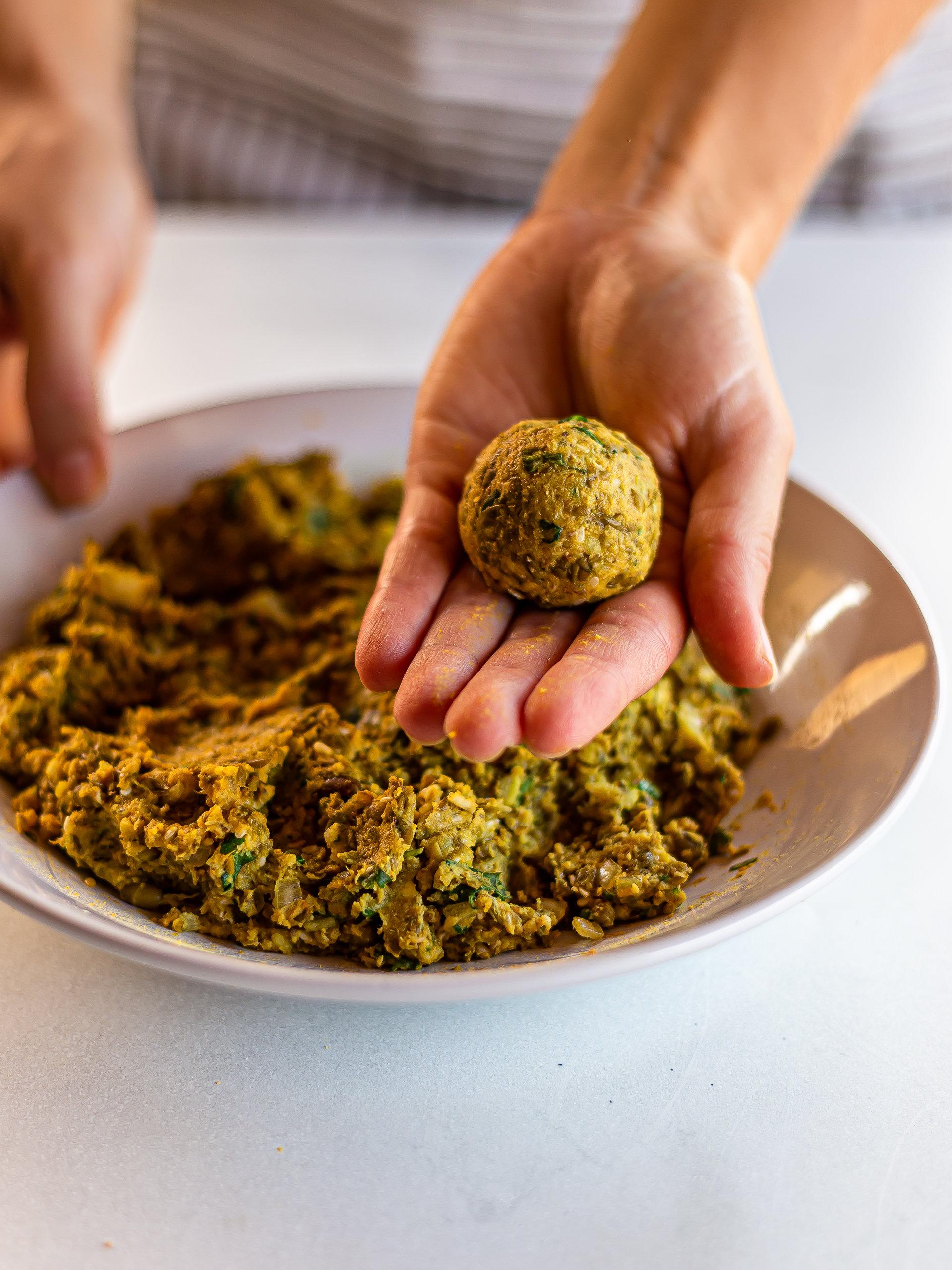
Step 6
To shape the falafels, wet your hands and pinch off a small handful of mung bean dough.
Nest, compact it and roll it between your palms to make a ball roughly the size of a walnut.
Then, place the balls onto a tray lined with parchment paper.
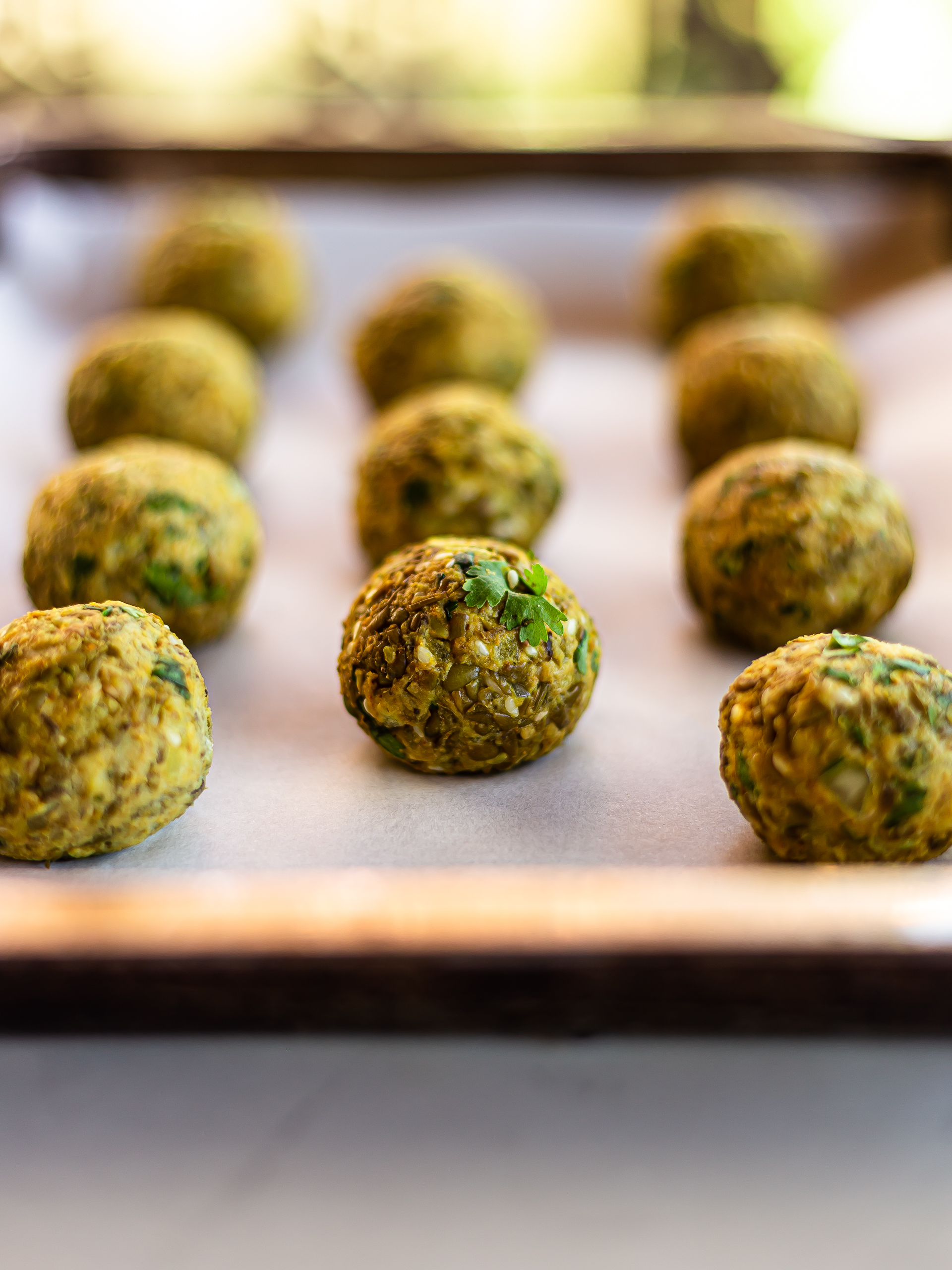
Step 7
At this point, you can either bake the mung bean falafels for a healthier recipe or deep-fry them in oil, following the traditional recipe.
To bake them, pre-heat the oven to 230 °C (445 °F) in static mode.
Brush the falafels with vegetable oil and bake them for 20-25 minutes, flipping them halfway through cooking time.
They're ready when they're lightly browned and crispy on the outside.
To deep-fry them instead, check out our tips below, or follow the frying steps in this jackfruit nuggets recipe.
Your homemade falafels are ready! Enjoy them warm or cold with a drizzle of tahini paste, or try them with our tahini lime dressing or tahini basil sauce.
They're great stuffed in warm pitta pockets with lettuce, tomatoes, and cucumber!
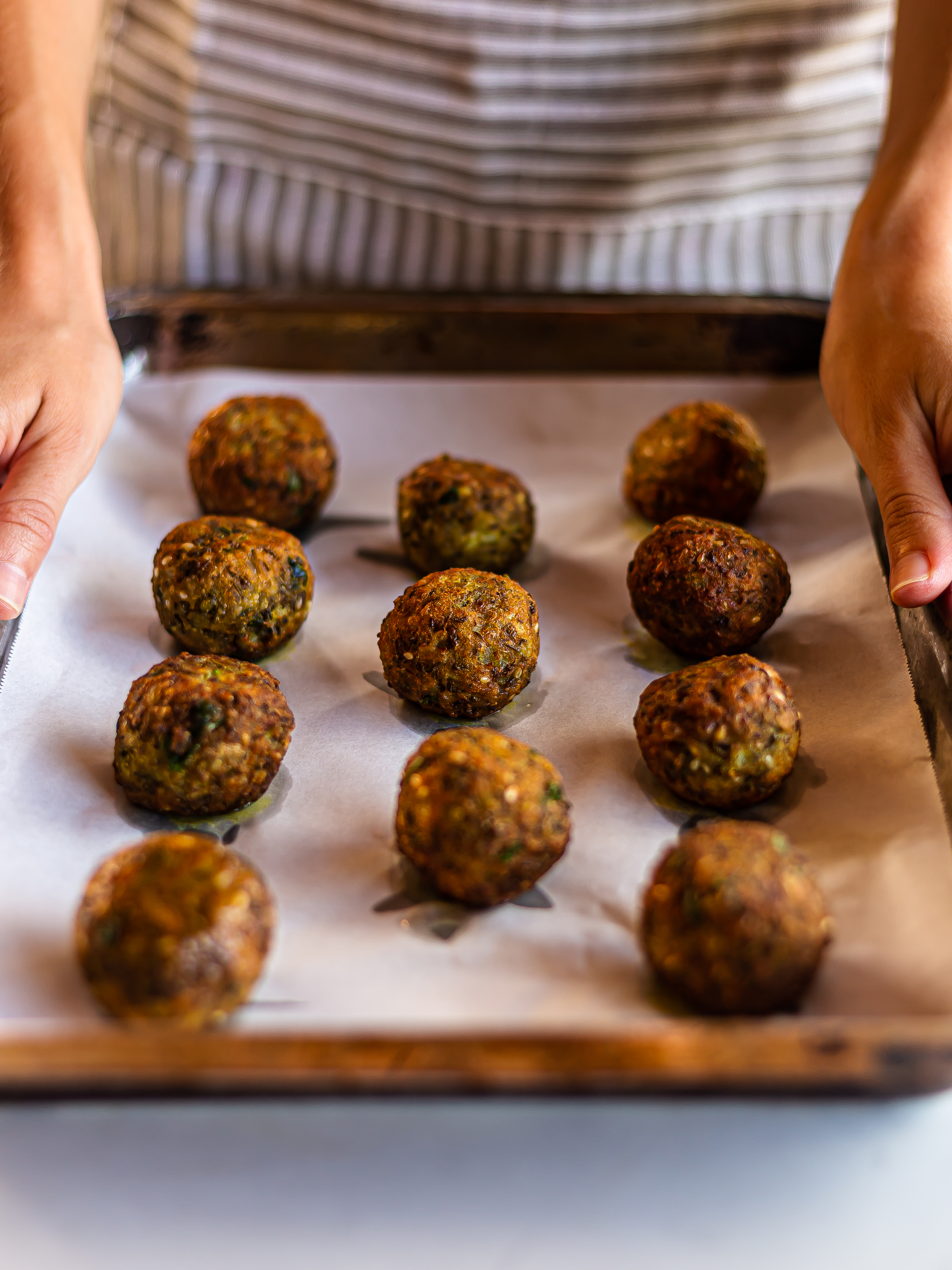
Tips
To deep-fry the falafels, fill a pot with enough oil so that the falafels will be completely submerged.
Use a kitchen thermometer to keep the oil just above 170°C (340°F), and add in no more than 4-5 falafels at a time. If you put in too many simultaneously, the oil temperature will drop quickly, and the falafels will absorb too much oil.
Fry the falafels until golden brown and crusty. Then, remove them with a slotted spoon and let excess oil drain on kitchen paper.
